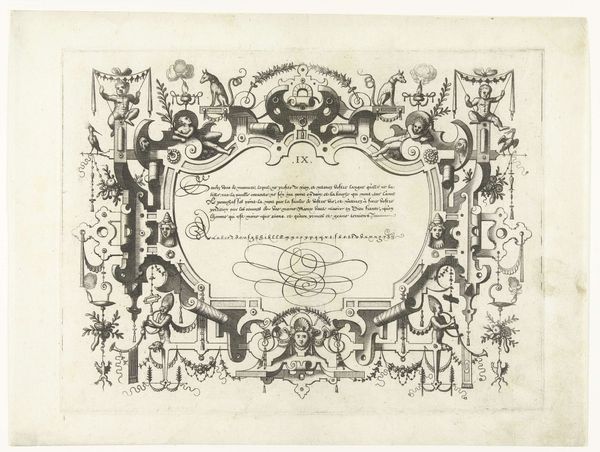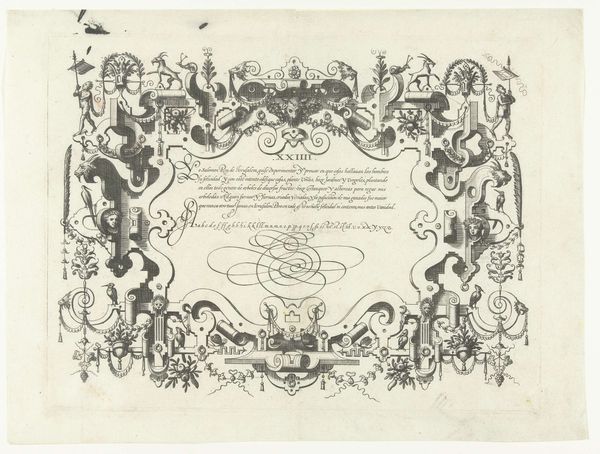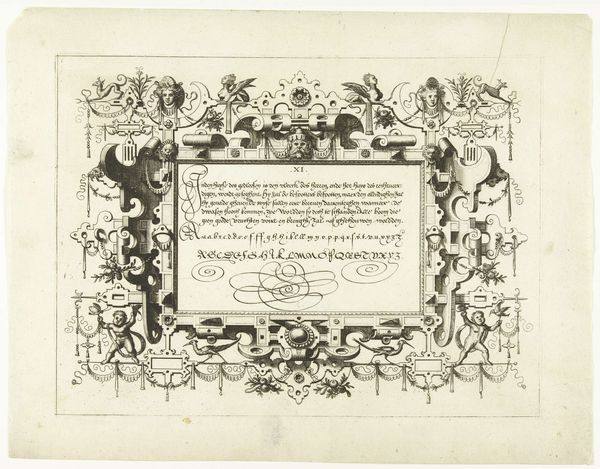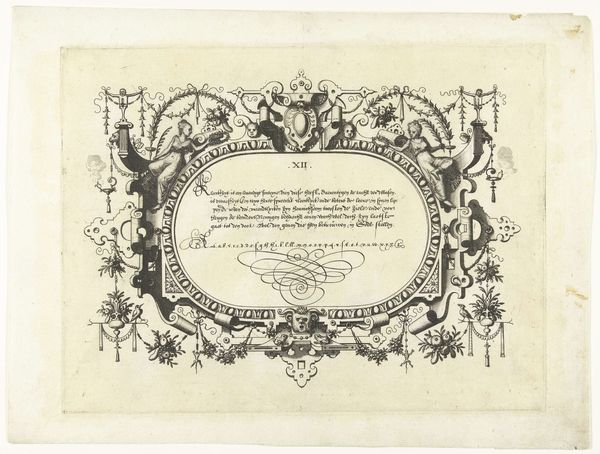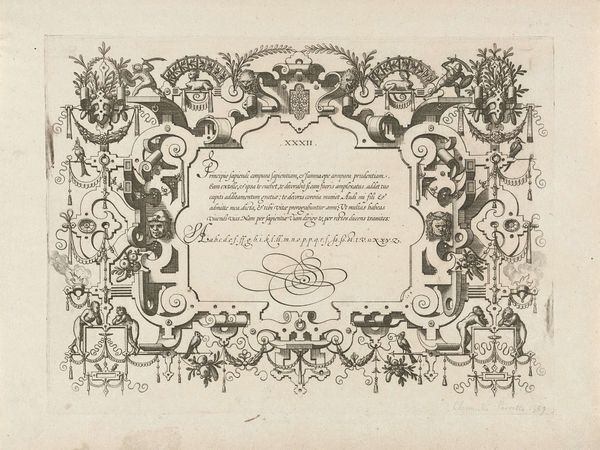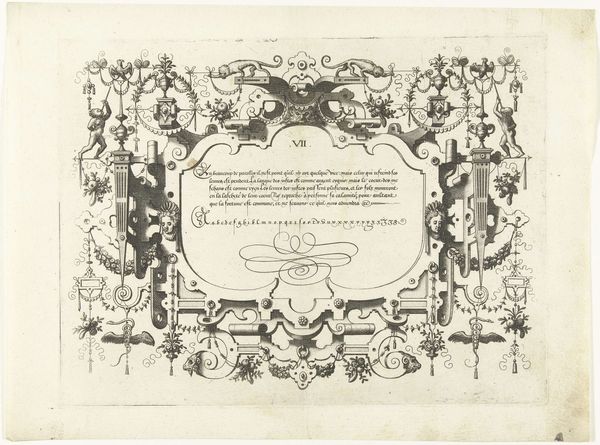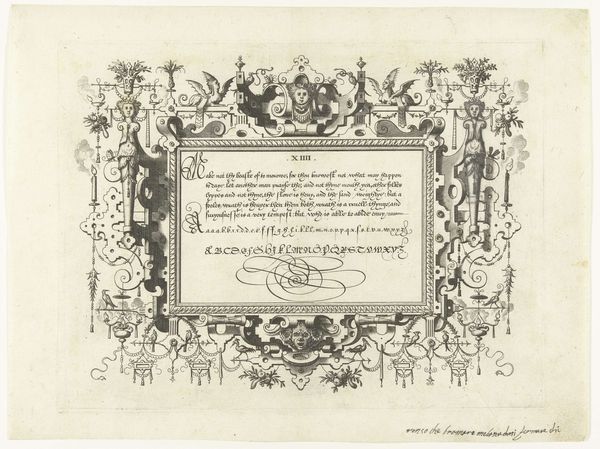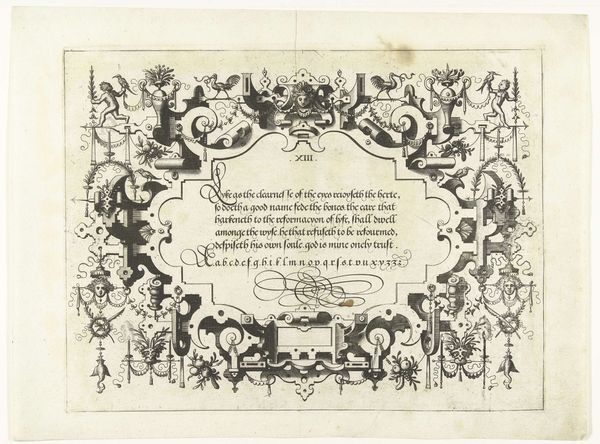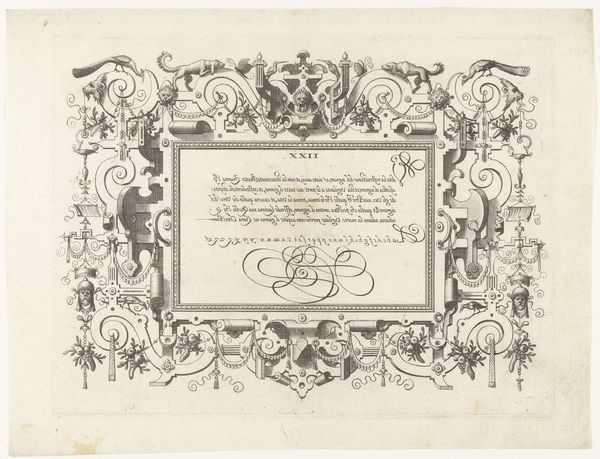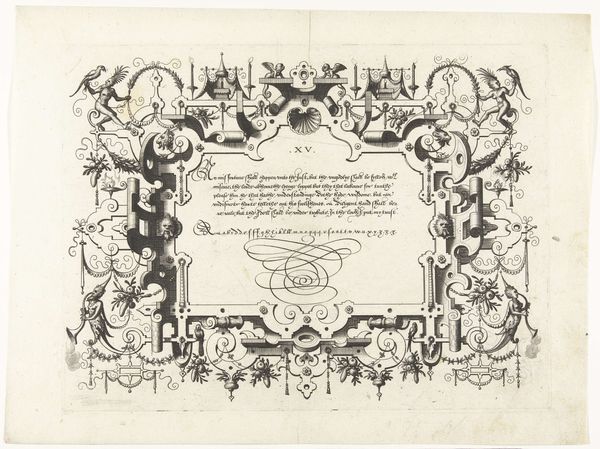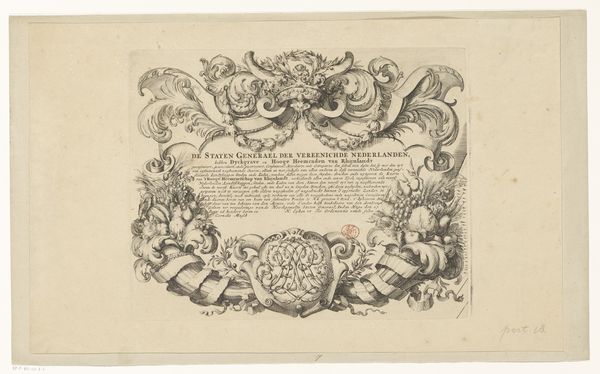
Cartouche met kalligrafie, erboven zitten twee honden 1569
0:00
0:00
johannesoflucasvandoetechum
Rijksmuseum
drawing, print, ink, engraving
#
drawing
# print
#
dog
#
figuration
#
11_renaissance
#
ink
#
engraving
#
calligraphy
Dimensions: height 215 mm, width 283 mm
Copyright: Rijks Museum: Open Domain
Curator: Editor: Okay, so this is "Cartouche met kalligrafie, erboven zitten twee honden," created in 1569 by Johannes or Lucas van Doetechum. It's a print made with engraving and ink. I’m really drawn to the intricate detail of the border and the almost mechanical feel of some of the embellishments, but also the fluid lettering, especially in the center. What’s your perspective on this piece? Curator: It's fascinating to consider the process of producing a print like this in the 16th century. Think about the labor involved in the engraving. The artist acts almost like a factory worker to create a mass-produced print. We also need to remember the materials; the paper itself, the inks. Are these materials locally sourced, or do they come from wider trade networks? The engraving presents us with very particular aesthetics, in conjunction with dogs, calligraphy. How do all these different aspects affect meaning for those viewing it at that time? Editor: That's interesting – framing it as a type of early industrial process! The dogs seem more decorative than meaningful at first glance. How might the context of production influence our reading of the imagery? Curator: Precisely! Dogs are common symbols, but within the context of a print intended perhaps to showcase calligraphy skills or even sold as examples to follow, do they function differently? Think about the hierarchies between what we now might call 'fine art' and what would have been understood as more functional craft or skill. This image blurs those boundaries by combining elaborate ornamentation with the demonstration of script. The mass production of such skill, its presentation and commodification raises questions about labor, the value of art, and the burgeoning print market in the Renaissance. Editor: I never thought about how the printing process itself changes how we should look at the image and what’s in it! That shifts my whole understanding of it. Curator: It's crucial to look at the object itself and the means of its production as indicators of how art, skill, labor, and economics come together in complex and revealing ways. Editor: That’s definitely given me a new way of analyzing art from this period. Thank you!
Comments
No comments
Be the first to comment and join the conversation on the ultimate creative platform.

